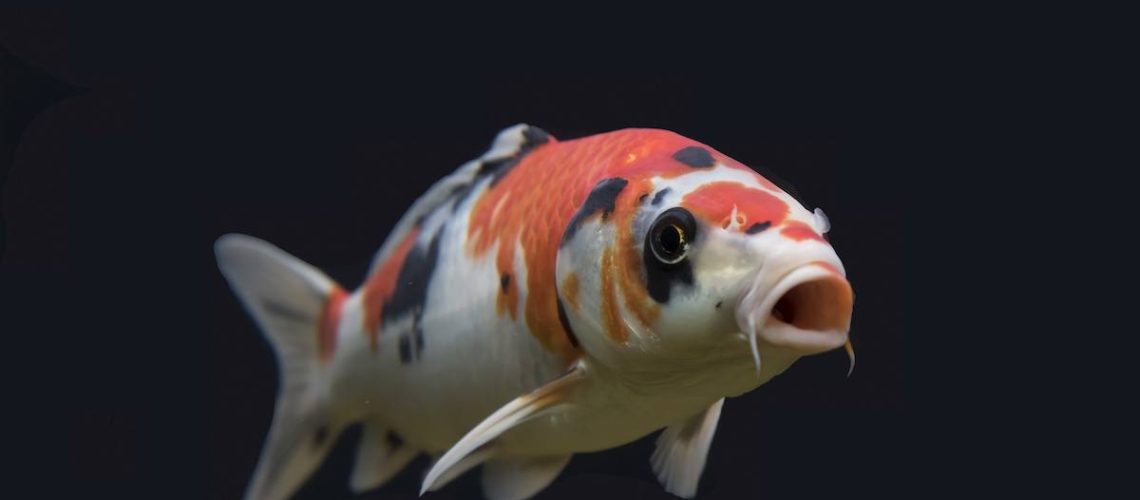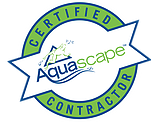BLOG

How to Plan and Design a Fish Pond
There are a few different types of fish ponds, but we find that most can be categorised into formal ponds or ecosystem ponds.
We want to take you through the process of how an ecosystem fish pond works and how to get the best natural result that mimics nature’s ponds.
It is essential to understand this before attempting a formal fish pond. A formal pond typically has a few of these elements removed, which as you can imagine leads to technical challenges in maintaining water quality.
In this article, we want to explore the Ecosystem Fish Pond.
Ecosystem fish ponds work by replicating the systems in nature and have a 5-part recipe – sounds simple right? Well, it is quite straightforward.

In nature, the ecosystem that we are trying to model our ponds after is called an Oligotrophic Aquatic Ecosystem. This is typically defined as having clear water with a rock and gravel substrate and very little organic matter in the water – which is how water clarity is achieved.
So, in a human-made construction, we need to ensure we don’t have debris settling in the fish pond – this would lead to a build-up of organic matter.
The best place to start is to use a good-sized surface skimmer to mechanically pull the surface water (and the floating debris), into an easy to clean basket or intake bay area.
We also use a series of circulation jets in several strategic locations to push all the water back to the skimmer area, which allows the debris to be removed from the system (once you clean the skimmer basket).
This is super important because it prevents these organic compounds from sinking and decaying in the fish pond. This physically removes them from the system, but it also takes the oxygen-rich water from the surface and sends it to the filter.
The magic sentence there is “oxygen rich water”! The beneficial bacteria and the whole world of micro and microorganisms that live in the biological filter and process the fish waste require lots of oxygen to do their job.
These beneficial bacteria break down the toxic ammonia and ammonium from decaying organic matter and detoxify it.
All of these processes are called the nitrogen cycle and was something your science teacher probably wanted you to learn in school.

There is a particular group of people that believe a fish pond should have a bottom drain and draw water down to the bottom where it feeds into pipework and filters.
We advise against this for several reasons.
We don’t like the idea of having a hole in your fish pond right at the bottom – you can guess the catastrophic results to all the fish and equipment if you had an issue and got a leak.
As we mentioned earlier, the water from the surface is full of oxygen, which is essential for the biological filter. The water from the bottom of the fish pond will be considerably lower in oxygen and mean the same biological filter will not be nearly as efficient.
But forget the performance of the filter and the risk of losing everything if there is a leak, and consider the inhabitants of the fish pond for a moment.
The beautiful koi fish that we put in the fish ponds have ventrally located mouths (they point down) with sensory barbels to help them find food on the bottom.
The ancestors of the koi are the Amur Carp, which lived in the Amur river (this is why we create river-like currents in areas of the fish ponds). They would graze on the bottom of the pond looking for microorganisms to feed on.
There usually is a healthy population of microorganisms living in the benthic areas (bottom of the fish pond) that help process waste and maintain the water chemistry. The koi use these barbels and dig around in the gravel looking for delicious Copepods, Amphipods or a myriad of other tiny creatures.


Having all these tiny elements helps create a complete cycle, and this wouldn’t be possible in a bare liner or concrete fish pond.
We also like to encourage the responsible housing of animals in an environmentally sustainable way by creating and replicating the processes that happen in nature.
In the same way that you wouldn’t keep a dog in a tiny apartment without being able to go out and run, play, dig, chase a ball (and sniff out other dogs), we want to give the fish the right amount of space, excellent water quality, healthy diet and quality of life – this includes letting them play in the water currents and dig in the gravel.
It is our job as pond builders to help give them all of this in a way that is aesthetically appealing to us, environmentally sustainable and low maintenance.
How big does my fish pond need to be? And where should I locate it?
So, one of the most important things to consider is where you will view your fish pond from. Ideally it should be close to the house and visible from the living areas. Sometimes there can be logistical challenges in doing that with underground services and incorporating paths, decking, outdoor entertaining areas etc.
Your fish pond should be in an area that gets at least partial sun. The fish and plants need the sunlight to maintain their health, but you should use some common sense here too. If you live in an area that is prone to extreme temperatures, then that should be taken into consideration when designing.
A great way to combat extreme temperatures and temperature fluctuations is to go deeper. A deeper pond will have a much more stable temperature. This is more important than some people give it credit for – oxygen can become limited in warmer water and 30 degrees centigrade is extremely dangerous. A temperature drop of more than 3 degrees rapidly (over a few hours), can also shock the fish and cause other stress-related problems.
With extreme weather events becoming more commonplace than we would like, it is vital to future-proof your fish pond and protect your investment.
A small fish pond is harder to manage than a bigger one. Going bigger will help make the water chemistry and temperature more stable. A smaller fish pond requires a lot more monitoring to stop fluctuations (and stability is the secret to success in all aspects of fish keeping). For example, if you went away and asked your neighbours to feed the fish – it is a lot easier to overfeed and run into water chemistry problems in a smaller pond.
FYI – the most common regret our customers have is always “I wish I had made it bigger”. We don’t leave behind unhappy customers, and there is always a way to add or extend your fish pond. Still, it is obviously much easier and cheaper to do it the first time. If you are concerned about the budget – ask us how we can start with basic filtration and add to it over time to keep the initial cost down and give you a bigger fish pond to begin with.
Also consider deciduous trees – this is a no brainer. If it drops lots of stuff it is going to make your life a bit harder. We have a range of solutions to overcome this if the perfect location has lots of falling leaves. We can increase skimmers, circulation pumps, filter sizes and have a myriad of other solutions that can be tailored to your specific site.
How many fish can I have?
This is a very open-ended question and can be up for interpretation. One of the biggest concerns with overstocking is the impact on water quality – we can help you upsize your filters, boost the performance of your existing filters, and increase the dissolved oxygen in your pond.
This doesn’t take into account fish wellbeing and mental health – hey, if dogs can have anxiety, fish can be happier with more space, right?
A great way to give you a guide to the amount of fish in your pond would be to say that for every 100 litres you can have 6.5cm of fish length – so if you want to have 10 koi @30cm long you should have a volume of around 4615 litres.
Please keep in mind that your fish will grow. This advice is obviously intended as a guide only.
How long does a pond pump need to be on for?
The biological filter requires a consistent flow of oxygen-rich water to do its job, and the pump should run 24/7. The pumps we use are very economical and only use a minimal amount of electricity. A typical pond pump can move the same amount of water as a pool pump for a fraction of the electricity.
If you were to run your pool pump 24/7 and move around 10,000 litres per hour, you would probably get a $3000 electricity bill per year (depending on your electricity rates, type of pump, off-peak etc. etc.). The same volume of water from a quality pond pump would probably cost $150 per year.
There are further savings to be made by installing multiple pumps or variable speed pumps. You can have the main filter pump separate to the circulation jets and even have an additional pump to boost the water flow to the waterfalls and decorative water features. We like to think of this as putting the pond into “party mode” when you want to entertain or drown out the noisy neighbours.
So – what is the 5-part recipe?
Well, it is really quite simple.
The five parts are:
- Rock and Gravel – This protects our liner, gives a natural appearance and lots more. The rocks and gravel become home to the beneficial bacteria and microorganisms that process the nutrients in the water.
- Mechanical and Biological filtration – The mechanical and biological filtration catch and filter the waste and nutrients in the pond.
- Plants – The pond plants use up excess nutrients, they provide a haven for frogs and other aquatic organisms that form part of the ecosystem, and look great!
- Fish – Well, what is a fish pond without fish? The fish also help to make sure debris doesn’t settle in the bottom, control mosquitoes, and can be very relaxing.
- Pumps and Plumbing – The necessary parts to join it all together.
Look out for another blog on the construction and tips to build your own fish pond using this 5-part recipe and how it all comes together.

